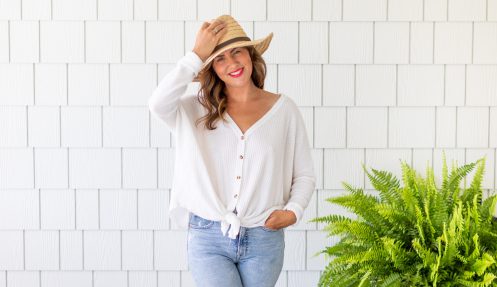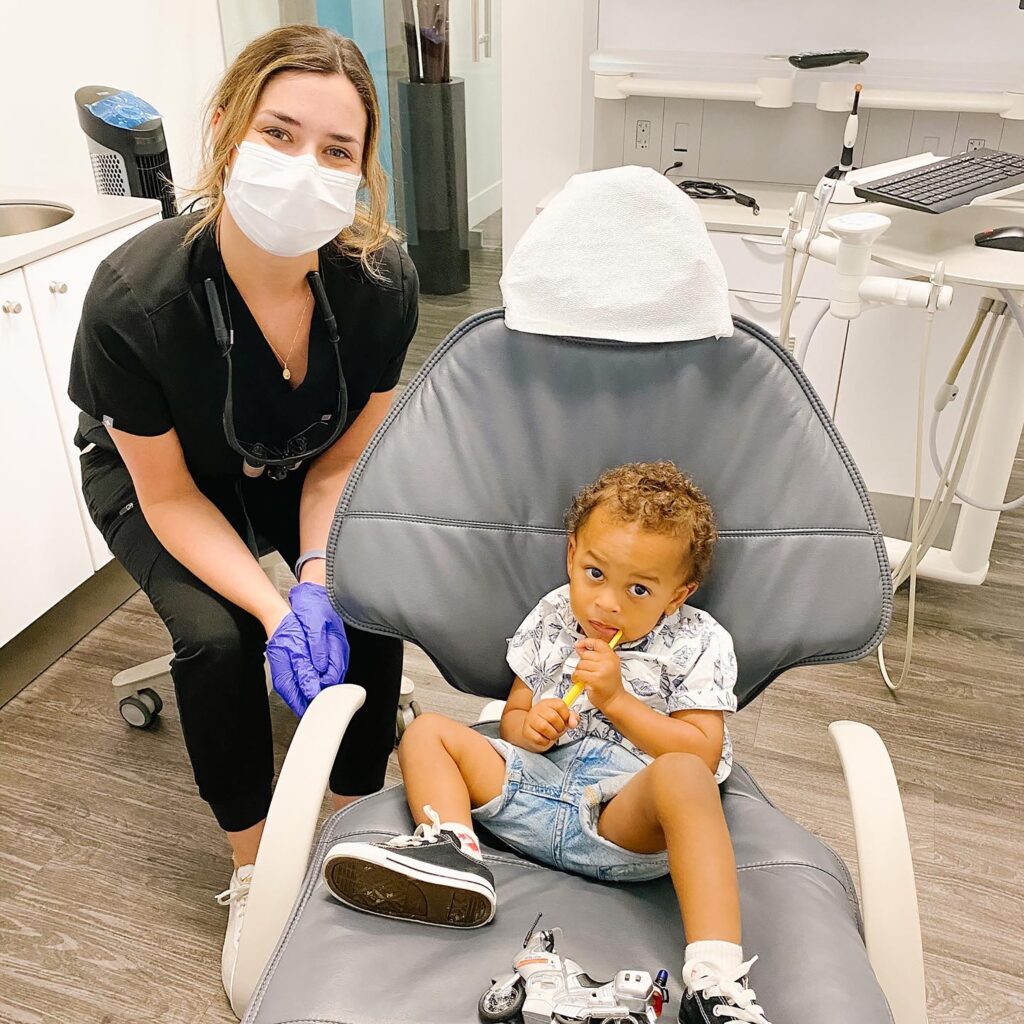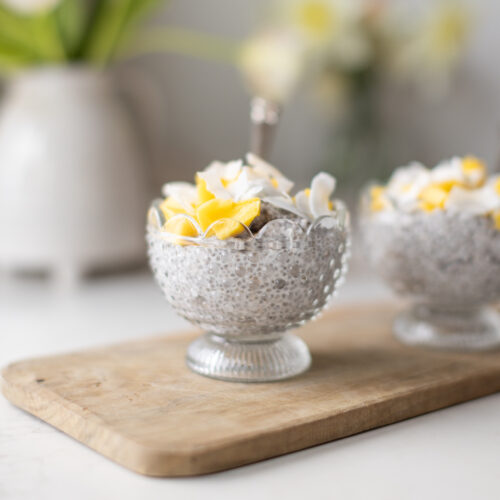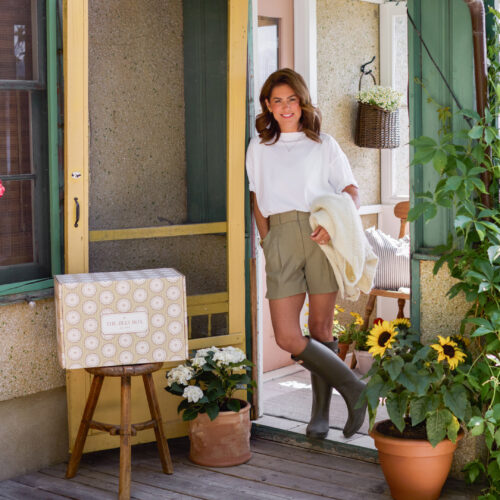If you watched my Instagram stories last week, you might have witnessed Annie’s latest visit to the dentist. Most of you likely know that I very much dislike going to the dentist and typically kids aren’t big fans of it either. BUT, our dentist Dr. Brittany McDougal is one of the best there is. Not only is she extremely knowledgeable, but she is also so amazing with Leo and Annie (even me when I’m being a big baby 😂). After our last visit, we were chatting about how amazing it would be for her to contribute to the blog and help answer some of the most common questions parents ask about their kiddos dental health. So, today I am so excited to welcome, Dr.Brittany MacDougall to the blog!
Take it away!

I like to tell my kids “to open big, like a lion”. Well, not my kids, but all my little patients. I am Dr. Brittany MacDougall, but most of my patients just call me Brittany. I am a general dentist currently practicing in Kelowna, B.C. and I have the great pleasure of treating Leo and Annie.
No one LOVES seeing the dentist – except for my fiancé, or at least he tells me he does. But jokes aside, providing dental care to children early in life can make going to the dentist a fun and positive experience and lessens dental anxiety that might develop later. Your child’s oral health and hygiene habits begin at home, so I’m here to answer some of the top dental questions I get from parents:
1. When should my child first visit a dentist?
Infants should be seen by a dentist within 6 months of the eruption of their first tooth, or by age 1. The goal is prevention. Ideally, your child will visit a dentist BEFORE there is a problem with his or her teeth. Early visits help you to determine whether the oral care you are doing at home is working. Your child learns that going to the dentist is important, and it makes them comfortable in a dental setting which can prevent dental anxiety.
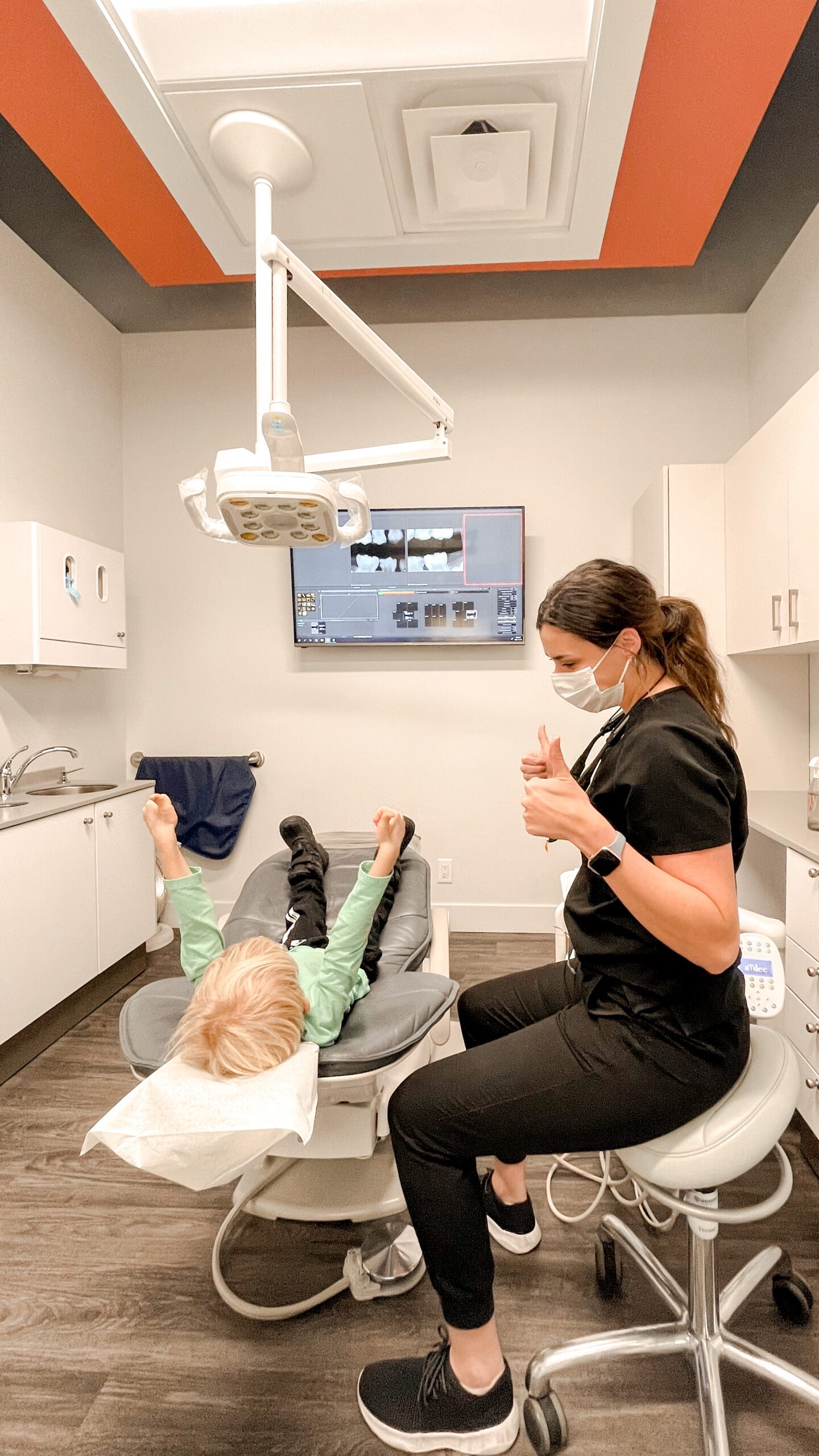
2. When should I start brushing my child’s teeth?
Funny enough, the answer is BEFORE they have teeth. Parents should start cleaning their infant’s gums using a wet facecloth or a soft bristled baby toothbrush. This develops good routines and provides a clean oral environment for the baby teeth to come into. It can also help to provide relief when they start teething (but more on that later!). Do not use toothpaste until your child has teeth.
Once they get their first tooth, it’s time to start brushing using a soft bristled toothbrush! After breast/bottle feeding your child, try to wipe off existing teeth with a wet cloth or gauze, even if they are sleeping. I know this may not always be easy, especially in the middle of the night. Just try your best to remember, it should only take a second or two and it should not arouse them. This will help to prevent decay that can form when milk is left sitting on the teeth.
3. How should I brush my child’s teeth?
Start by laying them down, on your knee or in another comfortable position. Hold the toothbrush with the bristles angled at about 45 degrees, touching where the gums and teeth meet. Use gentle circles to clean, no scrubbing. Scrubbing is too aggressive and can damage the gums. Brush twice daily, once in the morning after breakfast and once before bedtime. Remember, no snacks should be eaten after you’ve brushed their teeth for the night. Brushing should be one of the last things that is done before your child goes to sleep. A good rule of thumb is that you need to continue assisting your child with brushing until they are able to tie their own shoes.
When they are young and you are just starting out, brushing can be a challenge and may require some creativity to get the job done. A few suggestions to help with this include letting them select which toothbrush they want to use, and giving them a toothbrush to hold while you brush with another one. Make it fun by singing songs, reading books about brushing, or watching videos. Have a stuffed animal, or favourite toy who brushes with them or watches over them while they brush. It’s recommended by the Canadian Dental Association (CDA) to replace their toothbrush every 3 months; this also helps keep brushing exciting for them. Don’t get discouraged! Some days and nights may go better than others – if you are only able to clean one area of their mouth, start with the other side when you try again the next day.
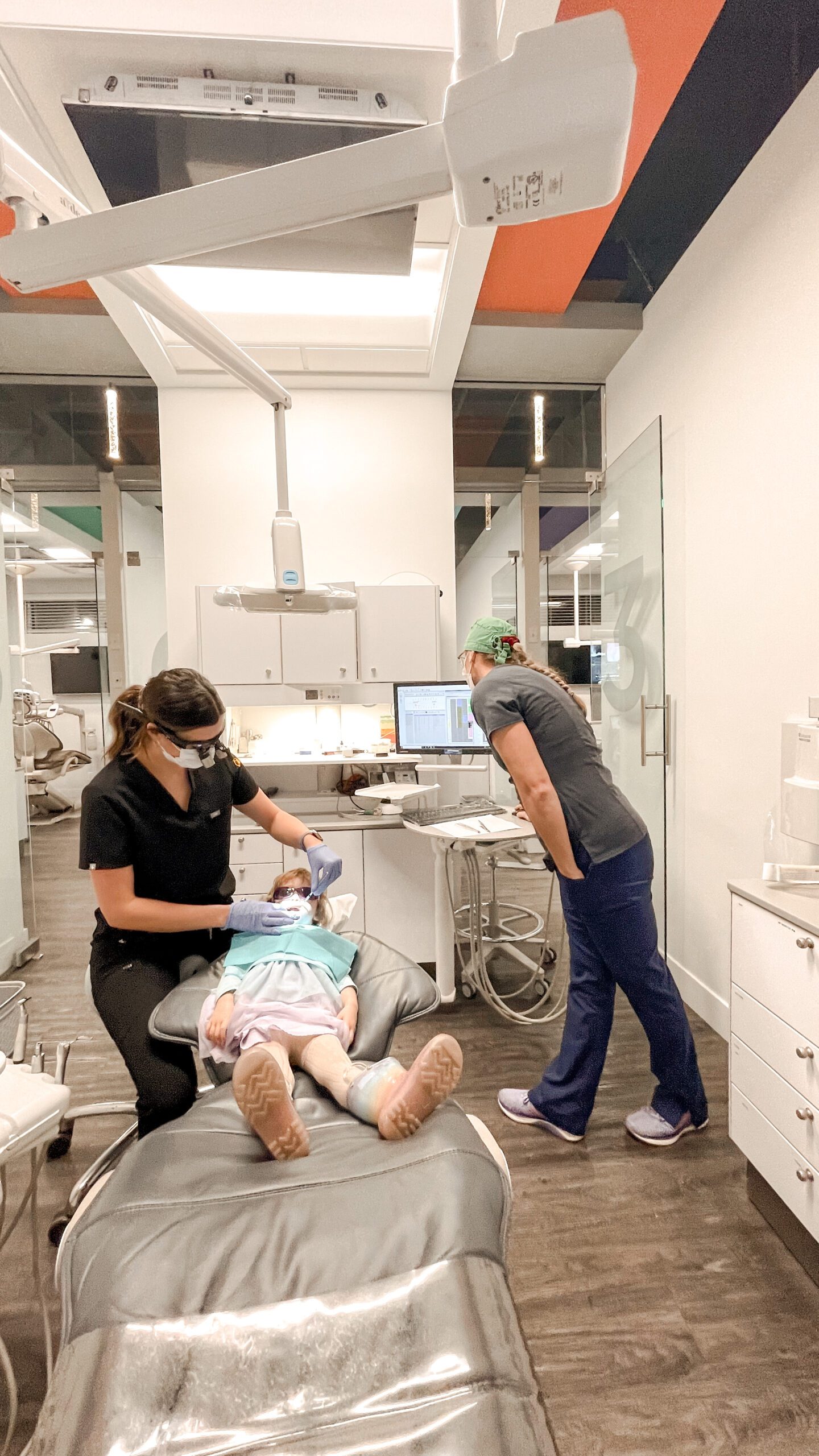
4. How much toothpaste should I use?
For children under 3 years old: The CDA recommends that children deemed high risk for cavities should use a rice-sized amount of fluoridated toothpaste. Talk with your dentist to determine if your child is at high risk for developing cavities. Try to encourage and teach your child to spit out the toothpaste. If your child under 3 is deemed low risk, then you can brush with water or a small amount of non-fluoridated toothpaste.
Children 3-6 years of age: should be using a pea-sized portion of fluoridated toothpaste and spitting it out when finished.
5. What are some teething tips and tricks?
You can massage your infant’s gums with a silicone finger brush, clean finger, or cold face cloth. You can also dip their pacifier in water and freeze for about 20 minutes. *COLD acts as an anesthesic on their gums.
When your child is able to hold things, roll a damp infant face cloth into a “C” shape and place it into a muffin tin. Place this in the freezer for about 20-30 minutes. Leave a portion of the cloth dry before freezing for them to hold. The shape is good for holding and the cool cloth provides relief to the area of sore gums. Breastmilk/formula popsicles are another one of my favourite teething options. There is a great one available from @west_coast_kids. It messy, but soothing, and even turns into a teether once finished. You can also place frozen fruits or vegetables into a mesh feeder and let them chew on this. It’s important to remember that in order to prevent early childhood cavities, try to wipe leftover milk or fruit off of the teeth with a wet cloth or soft toothbrush after baby has finished.
Children’s Advil or Tylenol can be helpful, especially before bedtime. Talk to your doctor or pharmacist to determine if it is safe to use for your child. Also ask about when and how much to give. Remember that dosing is based upon weight, not age.
I do not recommend amber necklaces (choking hazard) or oral numbing gels (can numb the throat). If you have any hesitations or questions about products, it’s always safest to consult with your dentist first.

6. Does my child need to floss?
Baby teeth often have naturally occurring spaces in between them, this is because when they are lost the adult teeth that come in are typically larger. Teeth that do not touch other teeth tend to be fairly self-cleansing with brushing only. However, we recommend flossing between any teeth that touch. This includes baby teeth that might be more crowded, and is also usually the case for the baby (primary) molars that come in around 12 and 24 months. Once both primary molars have erupted it’s important to incorporate flossing once a day into your child’s routine. In between the baby molars is a very common area to find cavities. The earlier you incorporate flossing into their routine, the easier it will become.
7. How should I floss my child’s teeth?
Keep it simple and start by using dental floss picks. Place the floss in between two teeth and use a sawing motion to gently guide the floss through the contact (where the two teeth touch) towards the gums. Once through the contact, slide the floss up one side of the tooth and down the other before removing. Rinse the floss pick with water before moving to the next area.
Although easier, floss picks aren’t quite as effective as regular floss. So, when your child is older and has mastered the use of floss picks it’s time to make the switch to traditional floss. Pull out about an arm’s length of floss from the container. Start by wrapping it around both middle fingers. Use a pointer finger and thumb to pinch the floss about an inch away from the other pointer finger/thumb. This is the area of floss you are going to use. Use a sawing motion (just like with your floss pick) to gently guide the floss through the contact. Once through, create a “C” shape with the floss and slide it up one tooth and down the other. Remember to move to a fresh portion of floss for the next area! Just like with brushing, try to make it fun, do it with them, and maybe even take them to the store and let them pick out their own floss! I’m a big fan of the fruit flavoured floss picks!

8. At what age should I wean a thumb sucking/pacifier habit?
By the time your child turns two or three their natural desire to suck decreases and this is a good time to start weaning if they haven’t already stopped on their own. If your child still has their thumb-sucking habit then offer a pacifier instead because thumb sucking can be harder to wean. You can control when your child is using their pacifier during the weaning process, for example, you may choose to start weaning by decreasing the duration and frequency of pacifier use and limiting use to only naps and nighttime. Children should stop their sucking habits by the time adult teeth come in (around age 5). If the sucking habit continues after the adult teeth come in it can cause problems with how their jaw grows and their teeth to come in.
9. Why is it important for my child to maintain healthy baby teeth if they are just going to lose them all anyway?
This might be my most commonly asked question. Your child’s baby teeth serve multiple important functions:
- Your child requires their baby teeth to eat comfortably. Adequate nutrition is required for proper growth and development and cavities in baby teeth can lead to infections causing swelling, pain, and potential premature tooth loss.
- Primary teeth are required for speech development.
- Premature tooth loss can affect your child’s self-esteem.
- The baby teeth serve to hold space for the permanent (adult) teeth when they are ready to come in. If a primary tooth is lost prematurely, it is important to ask if your dentist if something needs to be done to hold the space until the adult tooth is ready to come in. Without this it can lead to worsened orthodontic issues in the future.
I hope this was informative and helps you and your little ones moving forward. Follow up with your family dentist if you have any further questions. Otherwise, feel free to reach out to me personally, or at Burtch Dental, where I have the privilege of practicing as an associate alongside Dr. Tusca Aslani and Dr. Terry Grover.
For more information see https://www.cda-adc.ca/en/oral_health/cfyt/dental_care_children/. They also have a section called Teaching Kids which includes jokes, games, and activities to help educate kids.
Happy Brushing! ☺
Brittany
